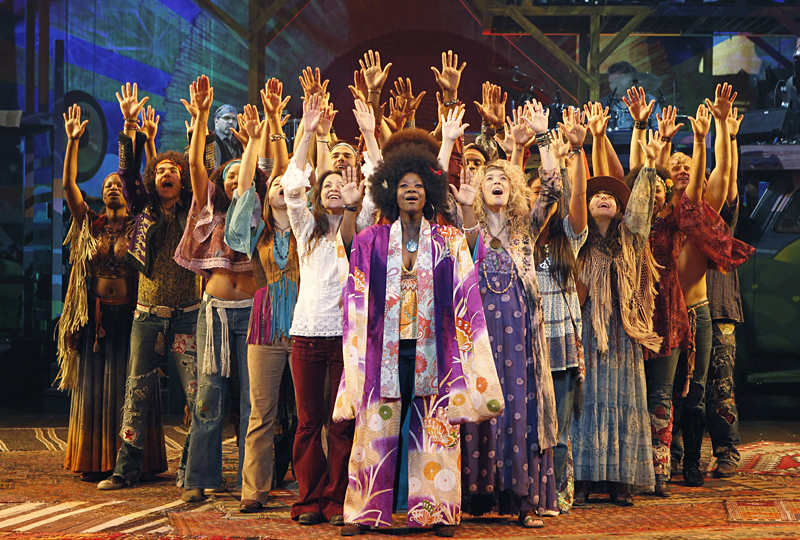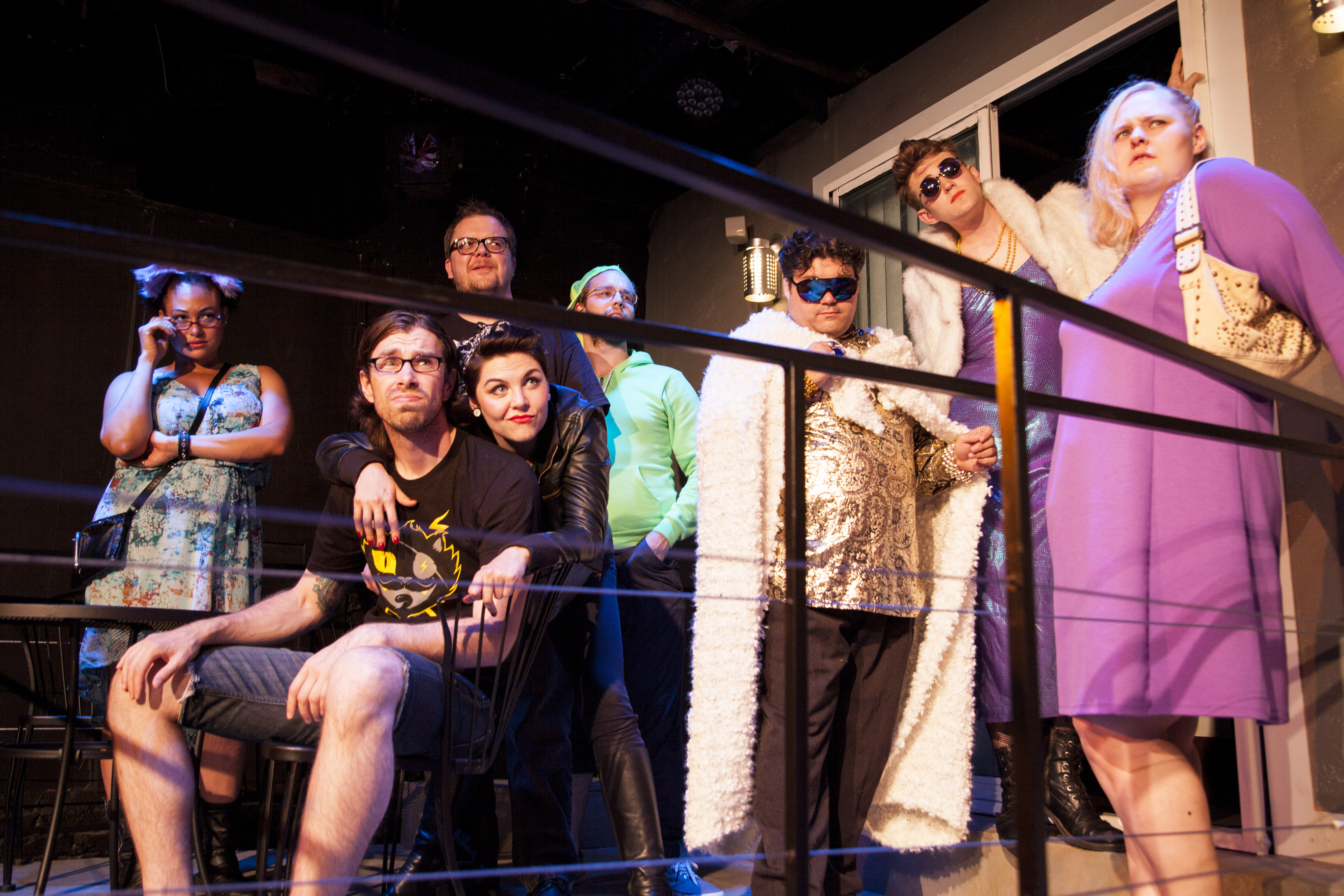I first saw Hair in Texas at the dawn of the ’70s. Across the street from the venue, a shaggy-headed youth glowered down from a billboard that read “Beautify America: Get a Haircut.” Cars parked at a nearby hard-hat site were festooned with bumper stickers redefining the peace sign as the “footprint of the American chicken.” Inside, I beheld a sloppy mess of a musical—more anarchic, perverse, and energetic than anything ever exported from New York’s then-moribund theater scene.
Hair has since been revived in New York, and a touring production is at the Paramount, offering a taste of revisionist history both great and bittersweet.
For starters, anyone interested in having a bang-up time at a Broadway spectacular is going to be thrilled with this production—every element crackles with electricity and exuberance. The cast is stellar, brimming with vocal talent and easier on the eyes than any hippie tribe has a right to be. And although you’ll get quick peeks at breasts and penises just like in the original version, this Hair has been washed clean, permed, primped, and primed to please—so much so that I’d like to plaster a banner across every poster so audiences would know this show has been Sanitized for Your Protection. As the production notes freely admit: “Hair no longer shocks. Nor is it meant to.”
Just as Paint Your Wagon and Oklahoma! are not the Old West, and South Pacific merely suggests the Asian theater of World War II, this show is a pastiche of ’60s images as we vaguely remember them—war in Vietnam, unrest at home, a rift between races, and the much-ballyhooed generation gap that still puts John McCain’s nose out of joint with those hippie-symp Clintons. But the characters’ struggles—like Claude’s over whether to burn his draft card or enter the service—seem more contrived now and emblematic of his time rather than vital to him or us.
Clearly this Hair doesn’t favor those former hippies who’ve lost most of theirs. Many of those around me (and onstage) Sunday evening weren’t even born when this show slipped into oblivion after Milos Forman’s movie version turned its psychedelia into DayGlo cinema in 1979. It’s likely that this revival’s director, Diane Paulus, and her company concluded that audiences wanted neither a history lesson nor total immersion in actual hippie culture. Instead they’ve provided an affectionate rear-view glimpse into the way we were.
Blame time for this, not the show—and the creators of Hair have continued to rework it over the decades. Accordingly, the central love triangle feels about as fresh as anything from Rent, and the archetypes are captivating if not realistic. Watching Claude (Paris Remillard), Berger (Steel Berkhardt), and Sheila (Caren Lyn Tackett) work out their head trips and bummers is still fun; Tackett in particular gets two of the show’s best songs, “Easy to Be Hard” and “Good Morning Starshine,” and she lets each of them go like doves in the park. They’re breathtakingly beautiful.
Production elements borrow liberally from the era, with the band on scaffolding before a backdrop of pulsating color reminiscent of both Peter Max and Yellow Submarine. The band is a show all its own, with an ability to invest these songs with a nuance they never had. The music’s familiarity provides the show’s only sense of linear progression. Mad props too to the sound techs, who use echo to let the last choruses of “Let the Sunshine In” linger in the ear long after the cast has left the stage.
For those who remember Hair at its best—a full-blown assault on the battlements of Broadway and the mores of those usually found there—this is tame stuff indeed. It’s the difference between punk and pop, really. Both are rock ‘n’ roll, but there’s a world of difference between the two.








